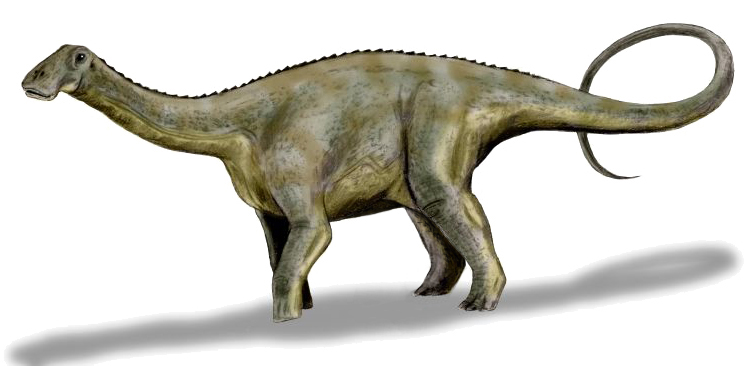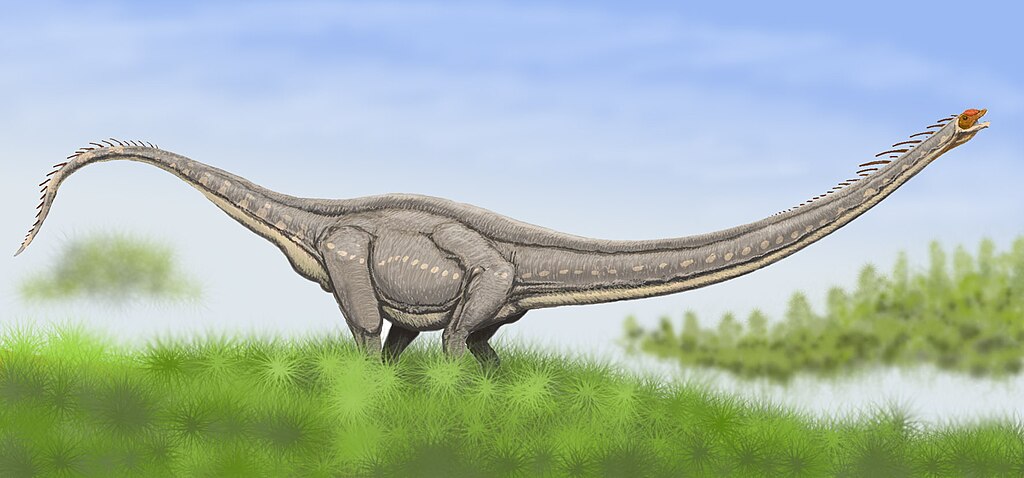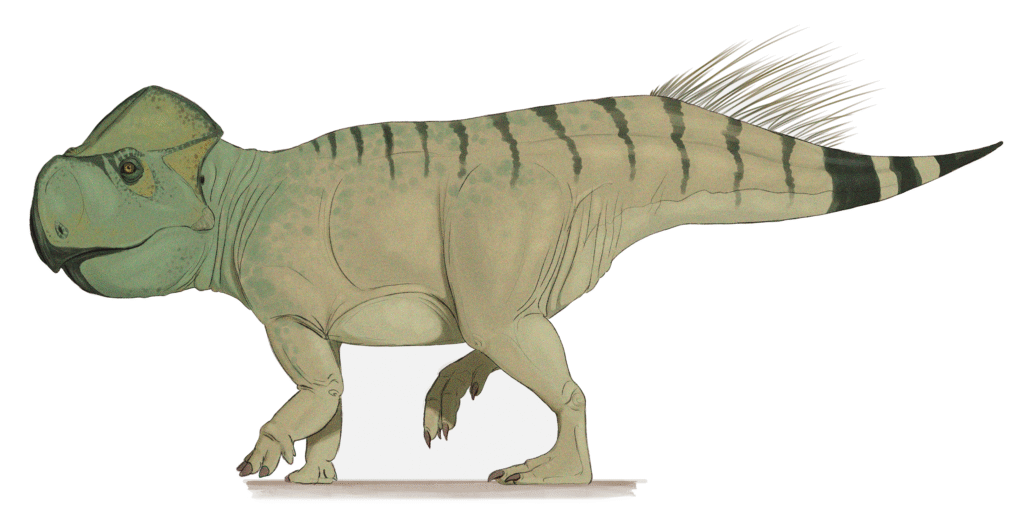When we think of prehistoric creatures, dinosaurs often dominate our imagination. However, the ancient seas hosted equally fascinating reptiles with feeding adaptations that rivaled their terrestrial counterparts in strangeness and specialization. Both dinosaur and marine reptile groups evolved over millions of years, developing highly specialized feeding mechanisms to exploit various ecological niches. From filter-feeding behemoths to shell-crushing specialists and ambush predators with expandable jaws, the prehistoric world was filled with creatures whose feeding habits would seem alien in today’s ecosystems. This article explores and compares the most bizarre feeding adaptations that evolved in dinosaurs and marine reptiles, revealing the extraordinary evolutionary arms race that shaped these prehistoric titans.
The Fundamentals: Dinosaurs vs. Marine Reptiles

Before diving into feeding adaptations, it’s important to clarify that dinosaurs and marine reptiles represent distinct evolutionary lineages. Dinosaurs were predominantly terrestrial archosaurs that gave rise to modern birds. Marine reptiles, on the other hand, included several unrelated groups like ichthyosaurs, plesiosaurs, and mosasaurs that independently returned to aquatic lifestyles. This convergent evolution, where different lineages developed similar adaptations to comparable environmental pressure, resulted in fascinating parallel developments in feeding mechanisms. While dinosaurs evolved diverse feeding strategies for land-based food sources, marine reptiles developed equally specialized adaptations for hunting in three-dimensional underwater environments. The fundamental differences in their habitats created distinct evolutionary pressures that shaped their feeding apparatuses in dramatically different ways.
The Filter-Feeding Giants

Among the most surprising feeding adaptations were those of filter-feeding dinosaurs and marine reptiles. Dinosaurs like Nigersaurus developed extraordinarily specialized teeth—over 500 arranged in batteries—forming effective straining devices for filtering vegetation. Their unusual, wide muzzles and horizontally oriented feeding position allowed them to vacuum up low-growing plants efficiently. In the marine realm, some plesiosaurs evolved similar filter-feeding capabilities, using their numerous interlocking teeth to strain small organisms from the water. Perhaps most remarkable was the Late Cretaceous marine reptile Morturneria, which possessed a novel apparatus of filter plates in its mouth, convergent with baleen whales that would evolve millions of years later. These parallel adaptations for filter feeding in completely different environments demonstrate how similar ecological niches can drive the evolution of comparable feeding mechanisms in unrelated animals.
Extreme Neck Adaptations

When discussing bizarre feeding adaptations, the extreme neck morphologies of certain prehistoric reptiles stand out dramatically. Sauropod dinosaurs like Mamenchisaurus developed necks reaching up to 50 feet in length, allowing them to browse vegetation at various heights without moving their massive bodies. This feeding strategy minimized energy expenditure while maximizing access to food sources. In the marine realm, elasmosaurids (a family of plesiosaurs) evolved necks containing up to 72 vertebrae—the highest number in any vertebrate—creating necks longer than their bodies. These extreme adaptations likely allowed them to sneak up on fish from below, using their long necks to strike quickly without alerting prey with their larger body shadows. The contrasting mechanics of the long—necked sauropods with stiffened necks for reaching high vegetation versus the flexible, sinuous necks of plesiosaurs for active hunting highlight how similar evolutionary innovations served completely different feeding strategies.
Shell-Crushing Specialists

Both dinosaurs and marine reptiles developed specialized dentition for crushing hard-shelled prey, but their approaches differed significantly. Certain dinosaurs like Gryphoceratops and other leptoceratopsids evolved batteries of teeth that created effective grinding surfaces for processing tough plant material and possibly hard-shelled invertebrates. In the marine realm, shell-crushing adaptations reached their pinnacle with mosasaurs like Globidens, which possessed rounded, dome-shaped teeth perfect for crushing ammonites, clams, and other armored marine invertebrates. These mosasaurs abandoned the sharp, piercing teeth of their relatives in favor of robust crushing implements. Even more specialized was Tylosaurus, which had bone-crushing teeth at the back of its jaws while maintaining piercing teeth at the front—a versatile combination that allowed it to process a variety of prey types. These durophagous (shell-crushing) adaptations represent remarkable examples of specialized feeding niches in prehistoric ecosystems.
Bizarre Jaw Mechanics

Some of the weirdest feeding adaptations involved unusual jaw mechanics that would seem improbable if we didn’t have fossil evidence. Certain hadrosaur dinosaurs possessed dental batteries containing up to 1,400 teeth that created self-sharpening grinding surfaces—essentially built-in food processors—allowing them to efficiently break down tough plant materials. Marine reptiles evolved equally strange jaw mechanics, with pliosaurids developing jaw-closing muscles of tremendous power, generating bite forces that likely exceeded those of any other predator, including Tyrannosaurus rex. Perhaps most bizarre was the feeding apparatus of the ichthyosaur Eurhinosaurus, which had an extremely elongated upper jaw that extended far beyond its lower jaw, creating a sword-like projection potentially used to slash through schools of fish or squid. These radical departures from conventional jaw designs demonstrate the extraordinary range of feeding adaptations that evolved in response to specific ecological opportunities.
The Vacuum Cleaners of the Prehistoric Seas

Some marine reptiles developed feeding mechanisms that functioned like underwater vacuum cleaners, representing some of the strangest adaptations in vertebrate evolution. Certain plesiosaurs evolved a hyoid apparatus (throat bones), suggesting they could rapidly expand their throat cavities to create a powerful suction force, similar to modern-day nurse sharks. This adaptation would have allowed them ty vacuum up small prey from the seafloor or water column. The short-necked plesiosaur Liopleurodon likely combined this suction feeding with powerful bites from its massive jaws, creating a deadly feeding apparatus. In comparison, no dinosaurs developed true suction feeding capabilities, as this adaptation is particularly advantageous in aquatic environments where water’s incompressibility makes suction highly effective. This fundamental difference highlights how the aquatic environment of marine reptiles drove the evolution of feeding strategies without parallel among terrestrial dinosaurs.
Toothless Wonders

Perhaps counterintuitively, some of the most specialized feeding adaptations involved the complete loss of teeth. Various dinosaur lineages independently evolved toothless beaks, most notably ornithomimosaurs and oviraptorosaurs, which developed diverse beak shapes specialized for different diets ranging from filter feeding to seed eating. Marine reptiles also explored toothless feeding strategies, with certain ichthyosaurs developing nearly toothless jaws that likely supported soft tissue structures for capturing soft-bodied prey like squid. The extreme example was Shonisaurus, one of the largest ichthyosaurs, which appears to have been essentially toothless as an adult despite reaching lengths exceeding 50 feet. These convergent trends toward toothlessness in both groups demonstrate how losing seemingly essential structures like teeth can represent advanced specialization rather than primitive simplification, allowing these animals to exploit specific food resources more efficiently than their toothed relatives.
Snapping Specialists and Ambush Predators

Among the most dynamic feeding strategies were those of the snapping specialists, which used lightning-fast strikes to capture prey. Certain theropod dinosaurs like Coelophysis had lightweight skulls and long, slender jaws perfect for rapid strikes at small, elusive prey. Meanwhile, in the marine realm, the long-necked plesiosaurs likely employed similar rapid-strike hunting tactics, using their extreme neck length to launch surprise attacks. The mosasaur Plotosaurus took a different approach, with a streamlined body built for sustained high-speed swimming to chase down fast prey. Perhaps most specialized was the pliosaur Rhomaleosaurus, which combined ambush capabilities with a sensory adaptation similar to modern crocodiles—pressure receptors that could detect the tiny water movements produced by potential prey, allowing it to hunt effectively even in murky water or low visibility conditions. These diverse approaches to prey capture highlight the range of predatory specializations that evolved in response to the challenges of catching mobile prey.
Prehistoric Vampires: The Blood Feeders

Some of the strangest feeding adaptations involve species that may have specialized in blood feeding or parasitic behavior. Certain small theropod dinosaurs like Compsognathus had needle-like teeth potentially suited for piercing the hides of larger animals to feed on blood or fluids, though this remains speculative. More convincing evidence exists for the marine reptile Thalattoarchon, which had specialized serrated teeth that would have created bleeding wounds in prey, allowing it to track injured animals over long distances, similar to modern great white sharks. Perhaps most bizarre was the feeding strategy of juvenile ichthyosaurs, which some evidence suggests may have fed parasitically on the placental tissues of their mothers before birth—effectively “vampire embryos” that consumed nutritive fluids within the womb. While speculative, these potential hematophagous (blood-feeding) adaptations represent some of the most unusual feeding specializations in prehistoric reptiles.
Prehistoric Gourmets: Specialized Diets

Some dinosaurs and marine reptiles evolved highly specialized diets that required extreme adaptations. The therizinosaurs represent one of the most dramatic dietary shifts in dinosaur evolution—massive, clawed theropods that abandoned carnivory to become specialized plant-eaters with pot-bellied digestive systems and unique skull adaptations for browsing vegetation. In marine environments, certain ichthyosaurs evolved extraordinarily large eyes—the largest relative to body size of any vertebrate—specifically adapted for hunting in the deep ocean’s low-light conditions, where they likely specialized in catching bioluminescent squid and fish. Shastasaurus, another ichthyosaur, had such reduced jaws and dentition that researchers believe it was specialized for suction-feeding on soft-bodied cephalopods exclusively. These hyper-specialized diets required corresponding morphological adaptations that produced some of the strangest-looking creatures in prehistoric ecosystems, demonstrating the powerful relationship between diet and morphology in driving evolutionary oddities.
Prehistoric Crop Rotation: Dinosaur Gut Fermentation

Large herbivorous dinosaurs developed some of the most complex digestive systems in evolutionary history, with sauropods evolving gut fermentation chambers that effectively turned their bodies into mobile fermentation vats. These dinosaurs likely possessed multiple specialized stomach chambers where plant material would ferment with the help of symbiotic microorganisms, similar to but far larger than modern cows. Some evidence suggests certain sauropods may have been capable of regurgitating partially digested food for further chewing—effectively “chewing their cud” like modern ruminants. Marine reptiles, being predominantly carnivorous, didn’t develop comparable digestive specialization; instead, they evolved adaptations for processing protein-rich diets. The contrast between these digestive strategies highlights a fundamental difference: while marine reptiles focused on capturing and processing animal prey, herbivorous dinosaurs had to solve the considerably more difficult problem of extracting nutrition from nutrient-poor plant material, driving the evolution of these elaborate digestive adaptations.
Battle of the Bizarre: The Weirdest of the Weird

When comparing the strangest feeding adaptations, several stand out as particularly bizarre. For dinosaurs, the hadrosaur Edmontosaurus had a feeding apparatus consisting of over 1,000 teeth arranged in complex dental batteries that created self-sharpening surfaces capable of processing even abrasive vegetation—essentially built-in food processors. For marine reptiles, the ichthyosaur Eurhinosaurus takes the prize with its dramatic overbite, where the upper jaw extended far beyond the lower jaw like a swordfish’s bill, creating an unprecedented asymmetry in jaw structure. The most extreme adaptation might belong to the marine reptile Atopodentatus, which possessed a hammer-shaped skull with teeth arranged perpendicular to its jaw, forming a filter-feeding apparatus unlike anything seen before or since. These extreme specializations represent the outer boundaries of what was evolutionarily possible, pushing morphological adaptation to its limits in response to specific feeding niches.
The Evolutionary Implications: Who Wins the Weirdness Contest?

When judging which group developed the “weirdest” feeding habits, we must consider the evolutionary context rather than just morphological extremes. Marine reptiles arguably faced greater adaptive challenges, needing to solve the problems of hunting, capturing, and processing prey in a three-dimensional aquatic environment with its unique physical constraints. This drove the evolution of truly bizarre adaptations like extreme suction feeding mechanisms, asymmetrical jaws, and specialized pressure sensors. Dinosaurs, while developing remarkable adaptations like dental batteries and specialized beaks, generally maintained more conventional vertebrate feeding mechanics. The extreme specialization seen in marine reptiles may reflect the greater competitive pressures in marine ecosystems, where predator-prey arms races drove rapid evolutionary innovation. Ultimately, marine reptiles might edge out dinosaurs in the weirdness competition, having independently evolved multiple feeding strategies with no terrestrial parallel, including some of the most anatomically extreme adaptations in vertebrate history.
Conclusion

The prehistoric world was filled with creatures whose feeding adaptations would seem alien by today’s standards. Both dinosaurs and marine reptiles pushed the boundaries of what was evolutionarily possible, developing specialized mechanisms to exploit specific ecological niches. From filter-feeding giants to shell-crushing specialists and ambush predators with expandable jaws, these adaptations demonstrate the incredible plasticity of vertebrate evolution. While dinosaurs developed remarkable adaptations for their terrestrial lifestyle, marine reptiles faced unique challenges in their aquatic environment that drove the evolution of perhaps even more specialized feeding mechanisms. These prehistoric feeding adaptations remind us that evolution’s solutions to ecological challenges often produce results far stranger than we might imagine, creating creatures whose feeding habits would seem bizarre even in science fiction. In the contest for evolutionary weirdness, both groups deserve recognition for their extraordinary adaptations that pushed the boundaries of biological possibility.




